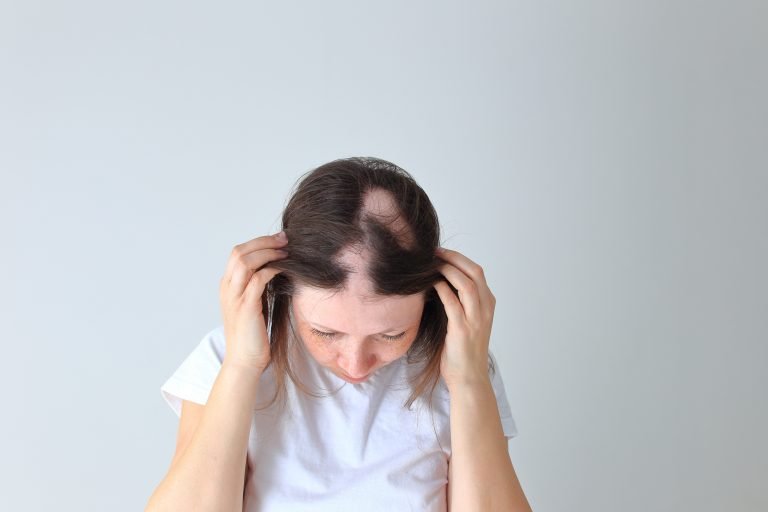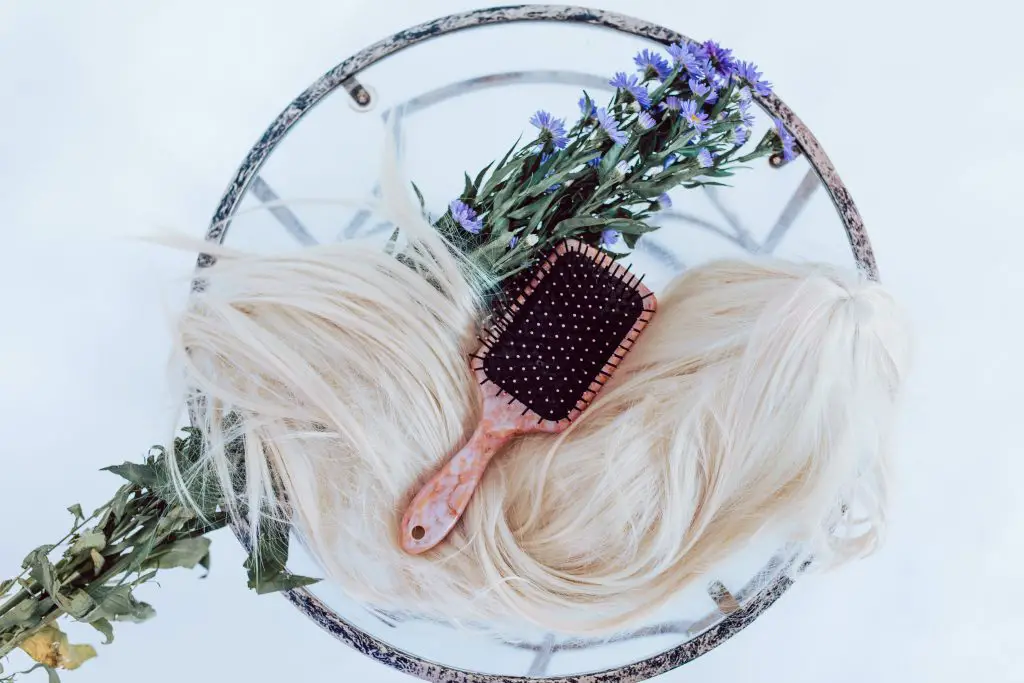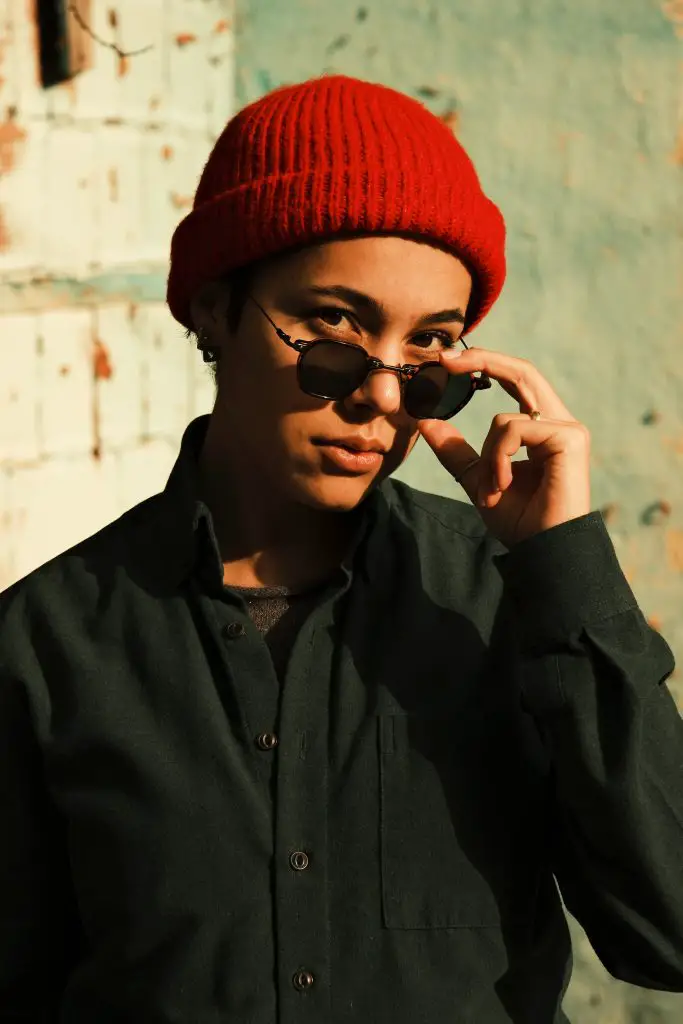
Page Contents
Hair loss of any type can be scary. Unfortunately, alopecia areata is one of many types of hair loss that might affect you at some point. Unlike hair loss caused by stress that will often correct itself with time, alopecia areata will only get worse until you treat it.
This makes it vital to know both what alopecia areata is and what your options are to stop it from spreading. I have read up on the most up-to-date treatments for this disease, and I hope that you’ll find one here that will help you get your hair growth back.
What Is Alopecia Areata?
Simply put, alopecia areata is an autoimmune disease. Every autoimmune disease attacks some part of your body; this type attacks your hair follicles. As your hair follicles are damaged, they lose their hair.

This mostly happens on the scalp, often in patches, but it can affect the hair on any and all parts of your body. So, you might lose your arm hairs before it affects your scalp. Wherever it starts, your scalp will eventually be affected, as it is the largest collection of hair.
The National Alopecia Areata Foundation (NAAF) keeps track of a lot of statistics about this disease. According to them, around 6.8 million people in the U.S. are affected by this type of hair loss. This means that everyone has a 2.1% chance of having areata.
The NAAF classifies alopecia areata as a polygenic disease. This means it involves your genes, and both parents have to contribute certain genes in order for their child to develop areata.
Yet, even with identical twins, there is only a 55% chance that if one has alopecia areata, the other will as well. As identical twins share all their DNA, the NAAF theorizes that other factors also have something to do with who inherits it.
The NAAF groups alopecia areata into three categories:
- Alopecia areata patchy – is the most common type where your hair loss is in one or more coin-sized patches.
- Alopecia totalis – is total hair loss on your scalp.
- Alopecia universalis – is total hair loss on your scalp, face, and body.
Fortunately, your hair follicles are still alive with alopecia areata. This means your hair can grow back once you get your areata under control.
Unfortunately, this condition is unpredictable. You may have hair loss for a few months, not have any problems with it for years, and then suddenly lose your hair again. You can also struggle with it for years, and then it permanently stops and never returns.
Ways To Treat Alopecia Areata
There is no true way to cure alopecia areata to make it go away and never return. All you can do for areata is treat the symptoms. WebMD states that alopecia areata treatments are not a one-size-fits-all thing.
You should pick an alopecia treatment based on the type and extent of your hair loss to get the best results. While there are natural remedies for alopecia areata, WebMD doesn’t feel there is enough evidence to confirm these remedies work.
That said, not everyone likes the idea of taking medications, especially not since medications often come with a list of possible side effects. So, you may want to try natural remedies first. You can use some of these remedies as well as a medication, potentially helping your hair growth even more.
Let’s look at the well-documented treatments first and then see what some of the natural home remedies for this type of hair loss are.
Related Reading
- Does Prednisone Cause Hair Loss?
- Vegamour Vs. Rogaine
- What Happens If You Stop Using Vegamour Hair Serum?
Intralesional Corticosteroids
There are two different ways that corticosteroids can be applied: through direct infections and topically. The injections have better results than the topical treatment, having great results for 80% of the people they tested. The latter option is considered better for those with needle phobias or for children with areata.
WebMD recommends the injections for alopecia areata that is mild and localized. The National Alopecia Areata Foundation says that topical corticosteroids may improve hair regrowth by about 25%, though, making topical still a good option.
These injections are one of the more common treatments for this disease and are given by a board-certified dermatologist. This is done monthly or possibly every other month directly to the area where you are losing your hair.
Corticosteroid injections don’t work for alopecia areata that covers a large area or has patches of missing hair all over your scalp or other places. It primarily works by decreasing inflammation.
Minoxidil
Minoxidil does not need a prescription to get or a dermatologist to apply it. Brands like Rogaine sell it in both liquid and foam form. There are also different concentrations to choose from, making this one treatment have plenty of variety.
Though WebMD does list minoxidil as a treatment option, they also say it is for mild cases and that it is not very effective by itself. They recommend you use it on top of injections. Then, minoxidil also has a variety of side effects to it that makes it incompatible with some blood pressure medications.
Anthralin
This topical treatment for alopecia areata is more intense than minoxidil. You apply it to the areas of your scalp where you have lost your hair and leave it there for 30-60 minutes once a day. It will almost always cause irritation on your scalp as it tries to trigger hair regrowth.
When the time is up for the treatment, you can wash it off. If it is going to work, it will usually do so in 8 to 12 weeks. WebMD still says it is less effective than the injections, but it does consider this treatment to be useful.
Immunotherapy
The American Academy of Dermatology Association recommends this treatment for areata if your hair loss is more severe. For this, your doctor will apply the treatment to your scalp with the intent of causing an allergic rash.
The goal of this immunotherapy treatment is to essentially remind your body that its own cells are not the enemy. Due to its unpleasant effects, though, it is considered a last resort for most people.
Use Oils
Almost all the home remedies you see usually involve some type of oil. This is because oils have a lot of beneficial properties, many of which have been recently documented. Oils are also easy to use, especially when you choose to apply them directly to your scalp.
Oils are also hydrating and soothing to your scalp, which your scalp will need when you have something like areata. If you can get the inflammation down enough, it will help your hair grow back.
Coconut oil is an areata remedy you will frequently see, having had many studies done on it that prove it has various benefits. This is also where essential oils come in.
Many essential oils like lavender are very soothing. Other essential oils commonly used for alopecia areata include peppermint, lemongrass, and tea tree. Applying these with some type of massager brush will help these get absorbed and may help you relax as well.
Be Nice To Yourself And Your Hair
Unfortunately, scientists haven’t been able to pinpoint what triggers alopecia areata. It is thought possible that stress can be one of the possible triggers. If it is, then it stands to reason that stress will also make it worse when your areata flares up.
So, you should take care to avoid stress, both mentally and physically. This includes things like trying not to stress about hair loss, avoiding sugars and foods that are inflammatory, and making sure to get plenty of rest.
Inflammatory foods for many people include things like eggs, soy, and wheat, even if you are not technically allergic to them. Probiotics and certain vitamins are helpful at reducing inflammation as well, so try to include plenty of those in your diet.
Final Thoughts
The only way to know that it is alopecia areata you are dealing with and not some other type of hair loss is to get diagnosed by your doctor. This might involve the removal of a few hairs or a small biopsy.

Anyone of any age, gender, or ethnicity can get areata, which often begins for the first time while the person is still young. Other signs that what you have might be areata include: a change of fingernail texture, itchiness before your hair falls out in that spot, and sinus or eye irritation when you lose the hair from your eyelashes or eyebrows.
Alopecia areata is only going to get worse until you do something about it. So, the sooner you choose and start a treatment, the better. If you know any things that help with alopecia areata that aren’t mentioned here, I’d love to know!







